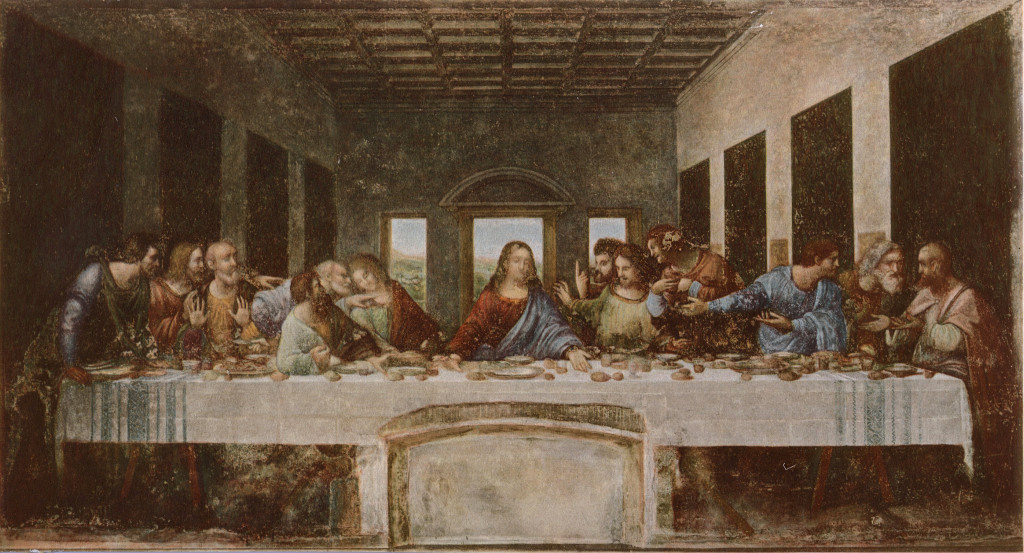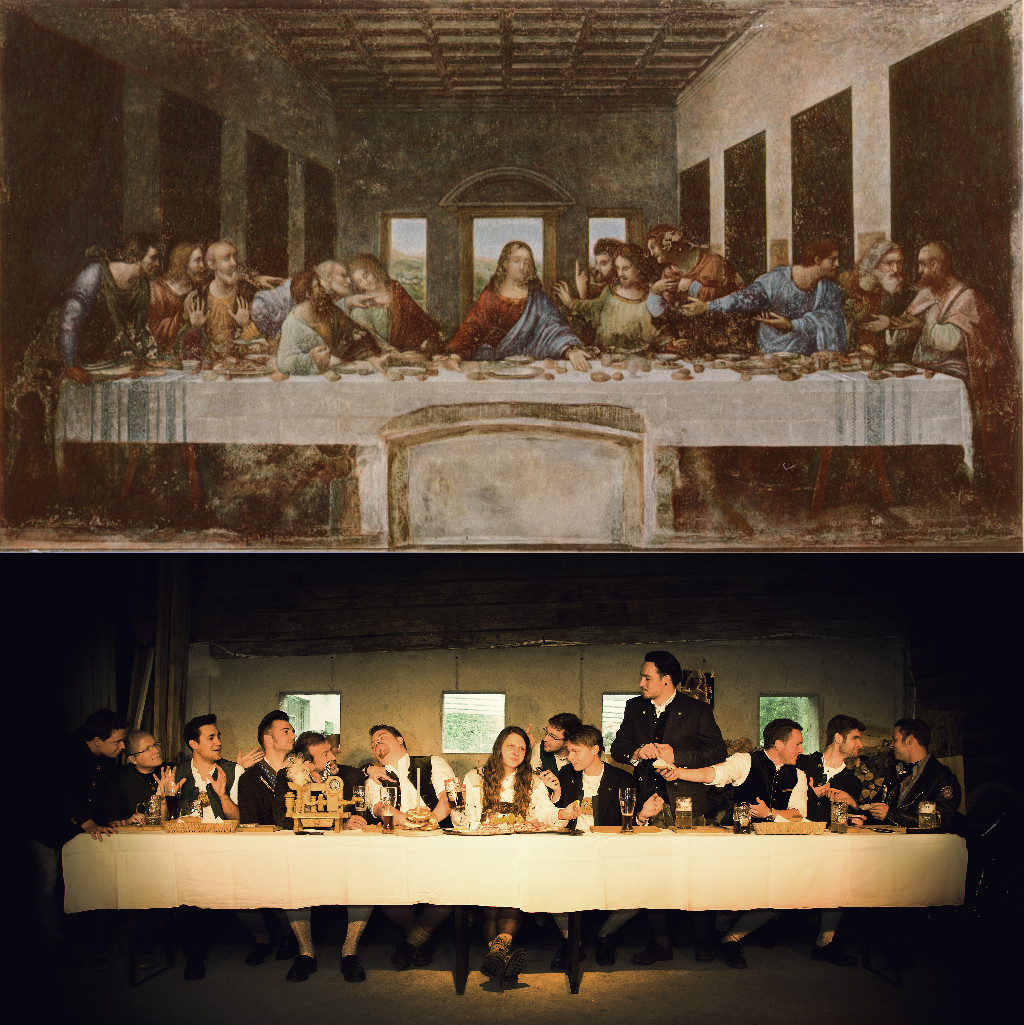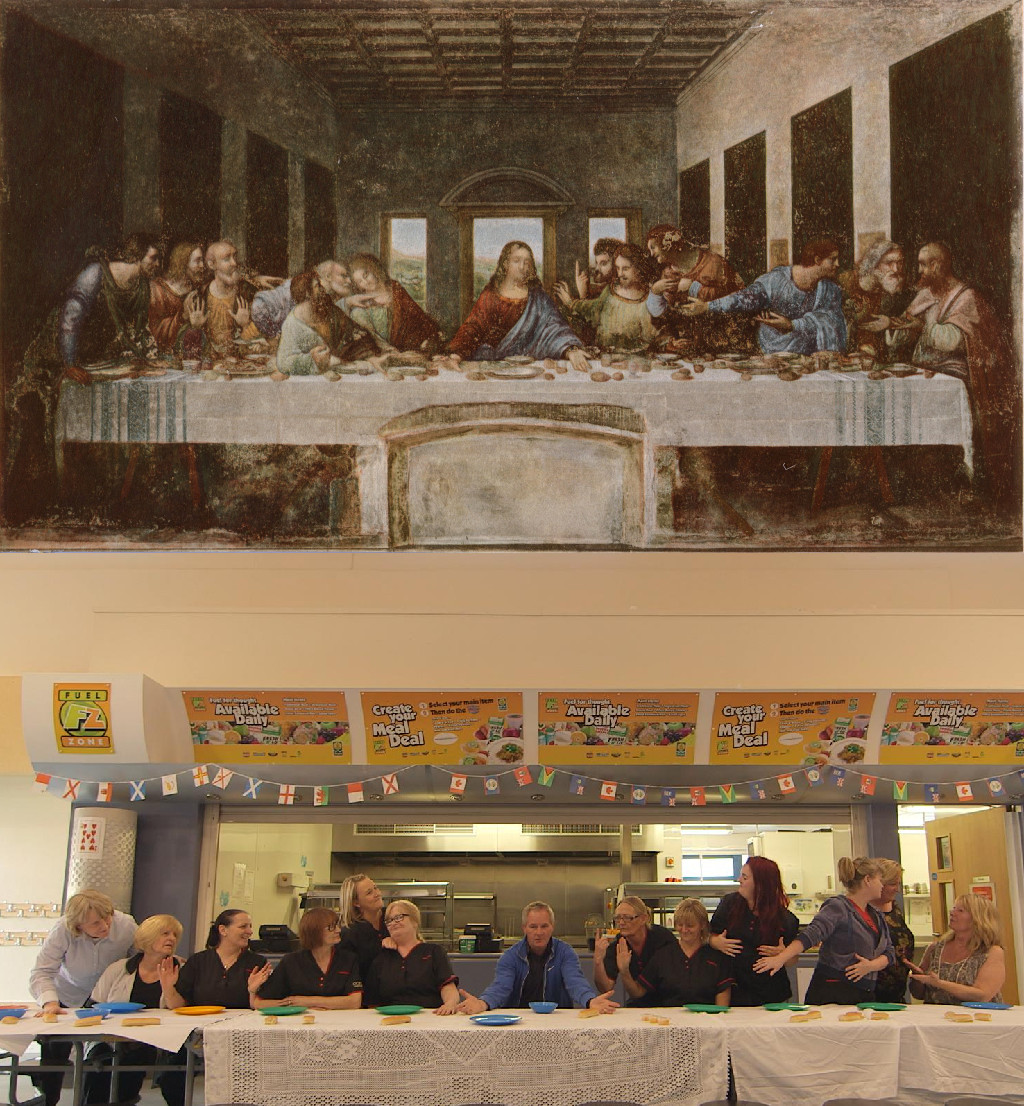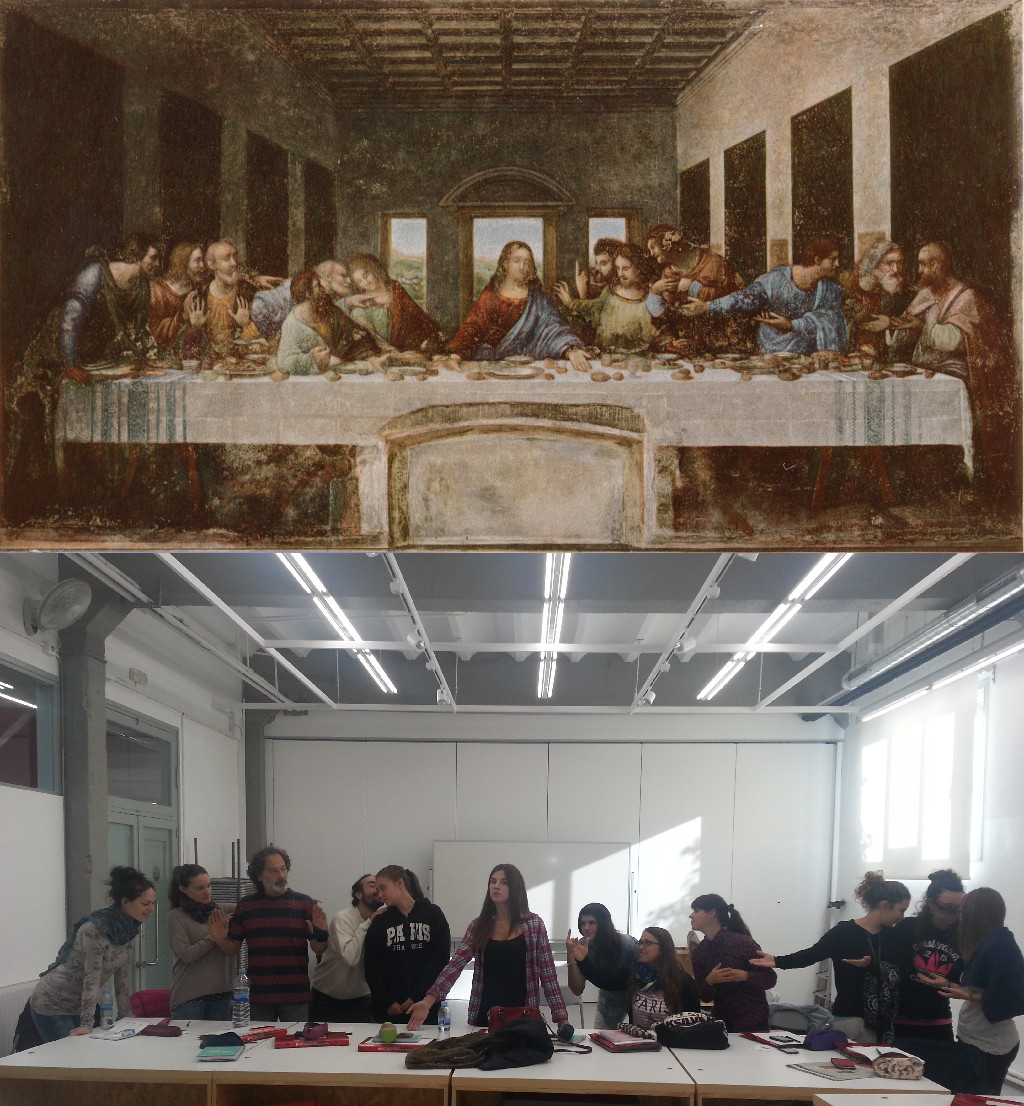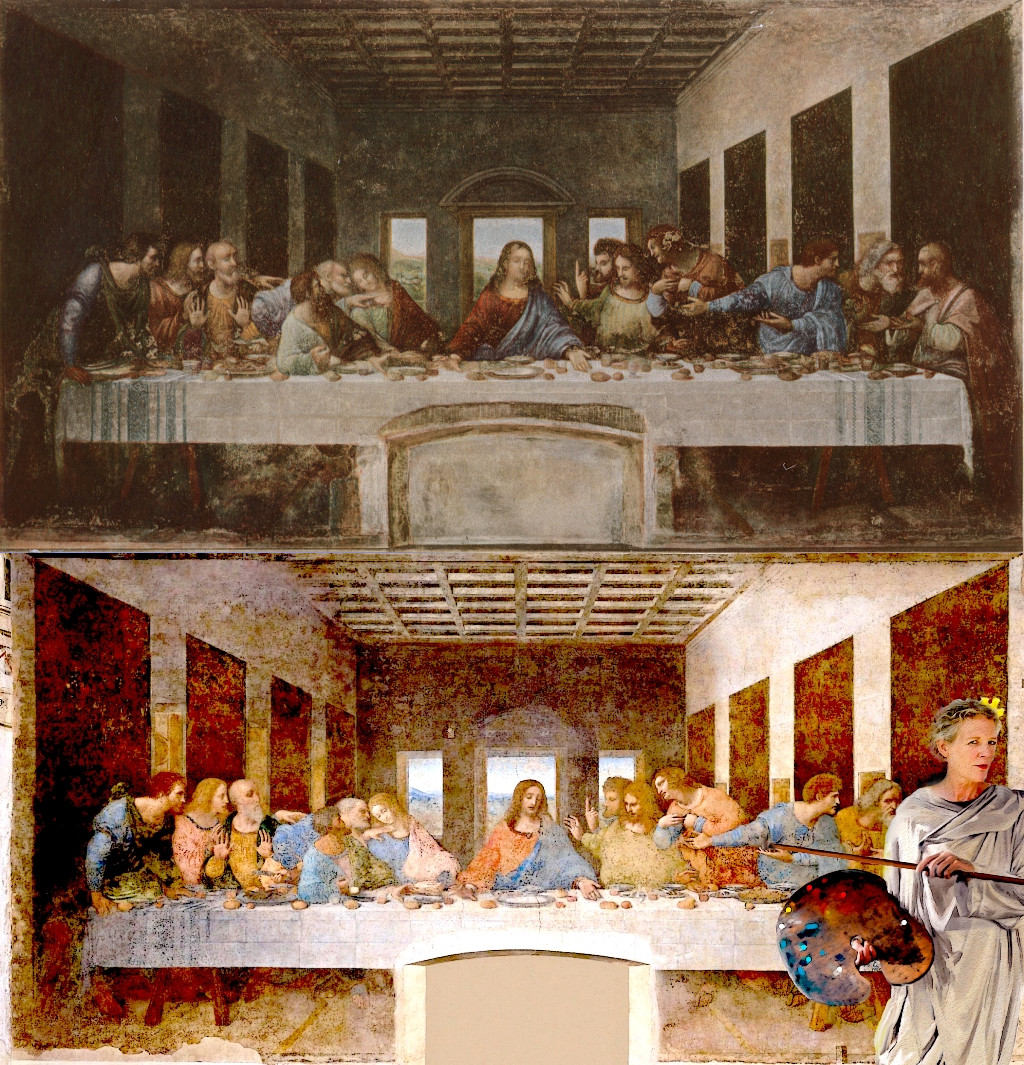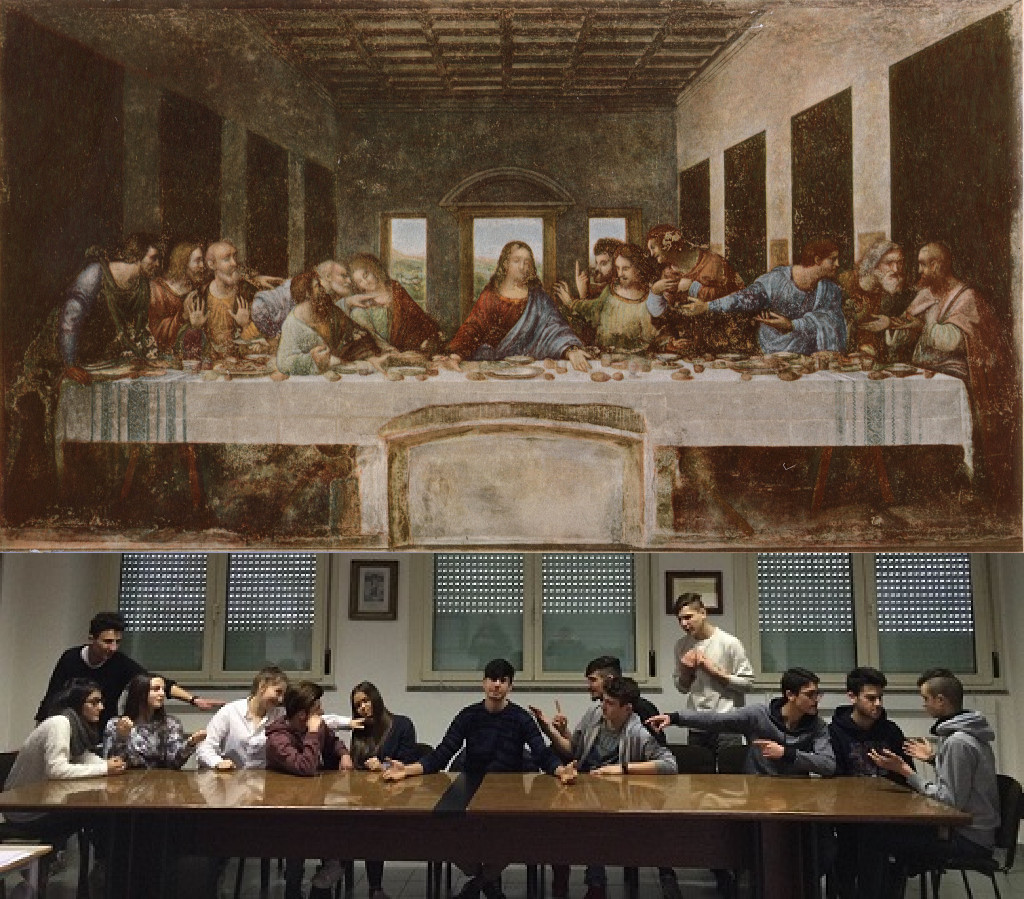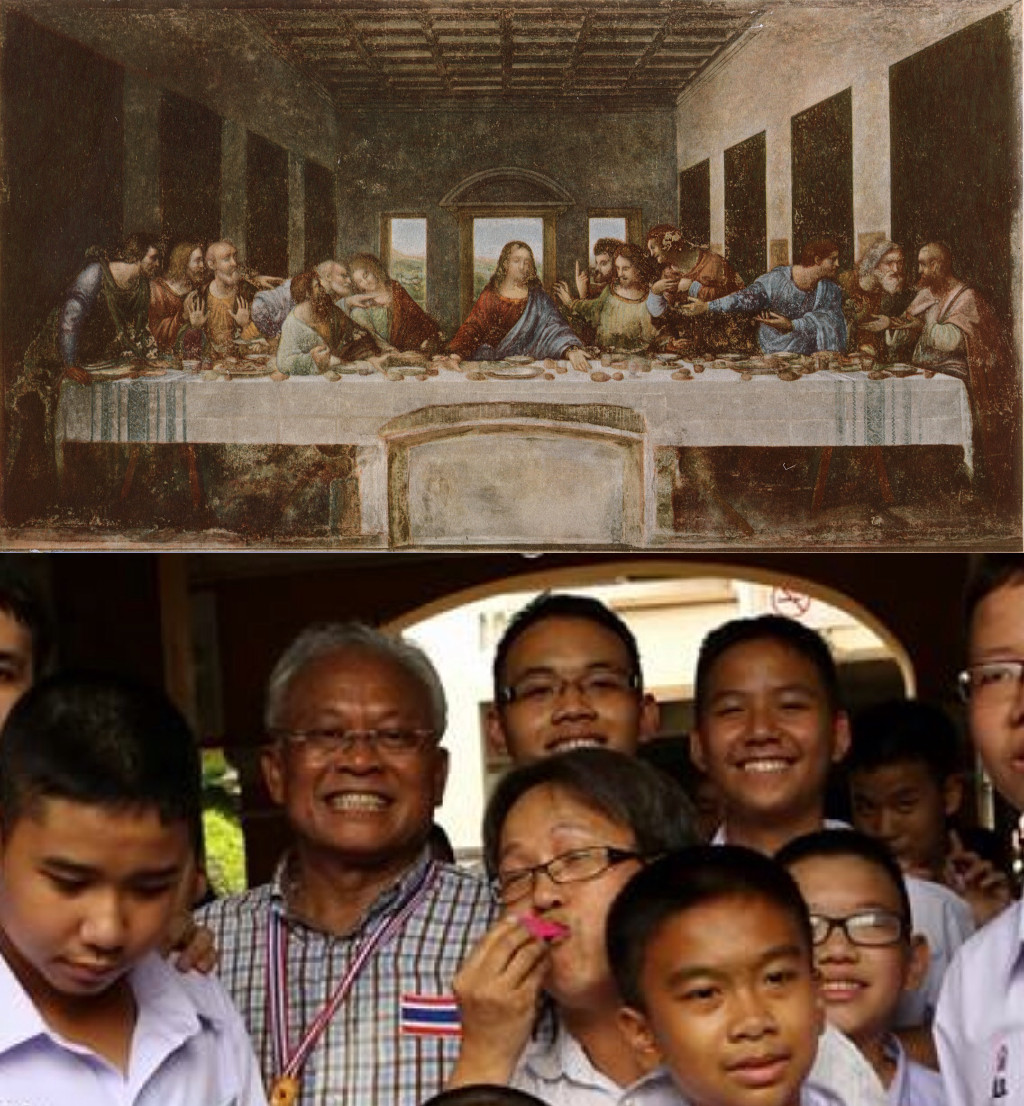By: Leonardo da Vinci (1452-1519)
Created: 1494-1498, Collection: Fondazione Federico Zeri - Università di Bologna, Santa Maria delle Grazie in Milan, Italy Rights: Public Domain
You need 13 people and a long table with a cloth. Group the figures on the left and on the right of Jesus in subgroups. Gestures and eye lines connect the figures, differently coloured clothes create structure and rhythm. Try to do the same.
The Last Supper measures 460 cm × 880 cm and covers an end wall of the dining hall at the monastery of Santa Maria delle Grazie in Milan. Leonardo began work on in 1495 and completed it in 1498. He did not work on the painting continuously.
One story goes that a prior from the monastery complained to Leonardo about the delay, enraging him. He wrote to the head of the monastery, explaining he had been struggling to find the perfect villainous face for Judas, and that if he could not find a face corresponding with what he had in mind, he would use the features of the prior who complained.
The Last Supper specifically portrays the reaction given by each apostle when Jesus said one of them would betray him. All twelve apostles have different reactions to the news, with various degrees of anger and shock.
Because the painting was on a thin exterior wall, the effects of humidity were felt more keenly, and the paint failed to properly adhere to the wall. Because of the method used, soon after the painting was completed, it began to deteriorate and fewer than sixty years after it was finished, it was already described as “ruined” and so deteriorated that the figures were unrecognizable.
The Last Supper has also been the target of much speculation by writers and historical revisionists alike, usually centered on purported hidden messages or hints found within the painting. Some have identified the person to Jesus’ right (left of Jesus from the viewer’s perspective), not as John the Apostle, but a woman, often purported to be Mary Magdalene. This speculation plays a central role in Dan Brown’s fiction novel “The Da Vinci Code”.
Source for the description: Wikipedia
